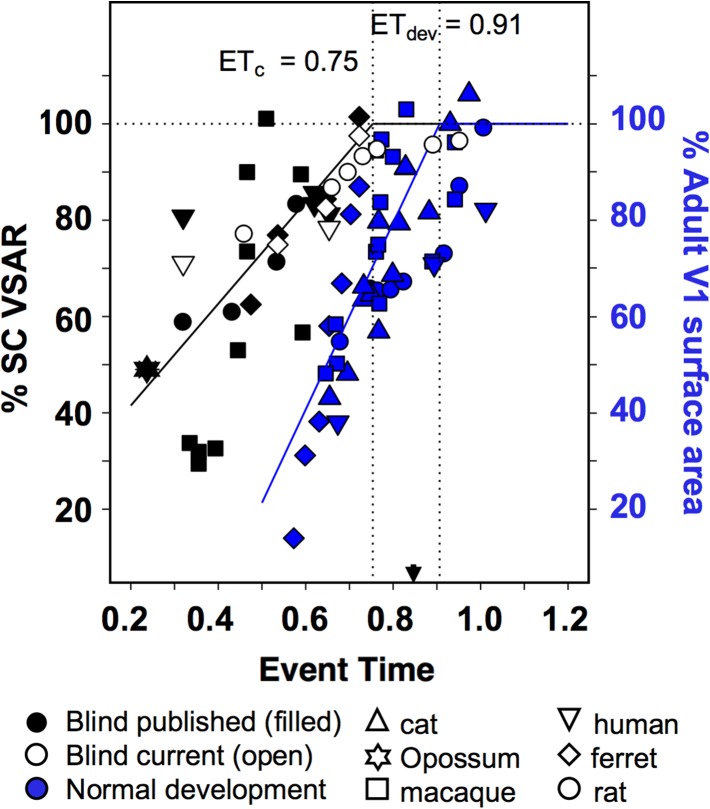Figure 7.
Inter-species comparison using a common developmental event-time scale (Workman et al. 2013) of the effect of age of blindness onset on the area size of V1 and the development of V1 area size in normal, sighted individuals. Our current data on the effect of blindness (open symbols), presented in Fig. 4, are plotted together with data from published studies on the effect of blindness on the size of V1 in different species (black symbols). Our data for the development of the area size of V1 in normal, sighted rats presented in Fig. 6 are plotted together with data from published studies on the development of V1 area size in different species (blue symbols, and blue Y-axis legend). The black and blue segmented regression lines were weighted by the sample size (either one or several cases) for each data point. Dashed horizontal line corresponds to 100% of sighted control VSAR, while dotted vertical lines indicate the inter-section points marking the event times for the estimated ETc = 0.75 (adj. R2 = 0.53), and ETdev = 0.91 (adj. R2 = 0.56). These event times indicate the end of the critical period for the effect of enucleation on the area size of V1, and the event time at which area V1 reaches its normal adult size in sighted individuals, respectively. This inter-species comparison confirms our observation that blindness ceases to affect the surface area of area V1 well before expansion of V1 is complete, and extends it to many mammalian species. Extant data on the effect of visual deprivation on the size of V1 come from histological studies in rhesus macaques (Rakic et al. 1991; Dehay et al. 1996), rats (Sugita and Otani 1984; Laing et al. 2012), ferrets (Reillo et al. 2011), short-tailed opossum (Karlen and Krubitzer 2009), cat (Olavarria and Van Sluyters 1995), as well as MRI-based studies of blind human subjects (Jiang et al. 2009; Park et al. 2009). Extant data on the development of the area size of V1 in sighted individuals include studies in rats (Duffy et al. 1998), cats (Duffy et al. 1998; Rathjen et al. 2003), macaques (Rakic et al. 1991; Purves and LaMantia 1993; Dehay et al. 1991, 1996; Horton and Hocking 1998), human (Lyall et al. 2015).

